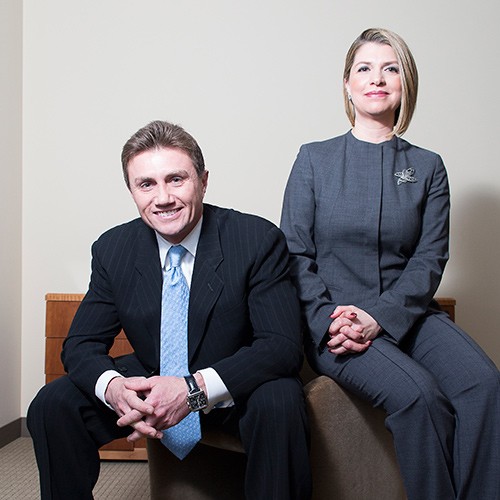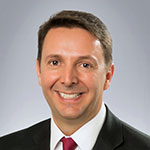Walk into New Life Covenant Church on Chicago’s North California Avenue on a Sunday morning, and you’re likely to find nurses, doctors, and other medical professionals taking blood pressure readings or providing diabetes education. Return during the week, and you’ll see bilingual, board-certified physicians offering prenatal care, mental health care, and other services. It’s all part of a new partnership with nearby Norwegian American Hospital, and for churchgoers and community members on the west side, it’s nothing short of a miracle.
Just five years ago, the Norwegian American Hospital built in 1894 was on the brink of ruin. Faced with decreasing Medicaid payments and a reduction in programs, Norwegian American’s leaders were considering bankruptcy.
Additionally, the Centers for Medicare & Medicaid Services were scrutinizing the hospital for possible violations of life-safety issues. Norwegian had a poor relationship with medical staff and citizens alike.
Remarkably, in 2014, the once-troubled hospital closed its budget in the black for the third consecutive year. Although losses in 2011 topped $4.5 million, revenue rebounded to $800,000 in 2012 and hit $1.2 million in 2013.
The organization scored above the national average for quality, resource use, and value in an annual hospital safety report published by the Leapfrog Group. In just two years, Norwegian improved its quality score by 235 percent, its resource use score by 408 percent, and its value score by 282 percent. Today, Medicare ranks Norwegian as the best in Chicago and fifth best in Illinois for reduced hospital-acquired infection rates.
It’s no coincidence that the hospital’s turnaround coincided with the arrival of its new chief executive officer, José R. Sánchez. A licensed clinical social worker since 1979, Sanchez has spent more than 30 years as a health-care executive. Prior to joining Norwegian American in 2010, he was senior vice president at one of the largest health care networks in New York City, Health and Hospitals Corporation. There, he managed a $1 billion budget and 9,000 employees spread over two level-one trauma centers, an acute care hospital, and 34 community-based health centers serving minority and working-class families.
During that time, Sánchez focused on health disparities and other issues affecting East Harlem, Central Harlem, and the South Bronx. “Hospitals play a key role in the community beyond providing health care. We’re a large employer and an economic engine.
We have a responsibility to make a real difference,” he says. “The health of the community requires the participation of every stakeholder.”
“A hospital in an underserved community can play a major role in improving the quality of life when it is committed to making a difference and really understanding what the community needs.”
Sánchez has brought that same attitude to his work in Chicago, where he’s known in the Humboldt Park community as a civic leader. He meets often with elected officials, leaders in the faith community, and other key players to develop strong partnerships that are contributing to Norwegian’s rebirth. These relationships have further generated tangible results in the community. New Life’s health clinics, a mobile dental van, and a pediatric Care-A-Van program connect patients to needed hospital services. In 2014, Norwegian American Hospital donated land for the construction of a 48-unit housing facility for veterans.
Renewing the community’s trust in the hospital was just one part of Sánchez’s plan. He also had to restructure operations and evaluate staff and services to stabilize Norwegian’s finances. Then, he cleared the Centers for Medicare and Medicaid Services violations, recruited doctors, created new training programs, invested in IT, implemented Electronic Health Records, and re-engaged his staff.
Shortly after his arrival, Sánchez tasked his staff with completing a far-reaching community-need assessment to uncover underadressed medical issues. After discovering high instances of diabetes, obesity, substance abuse, and mental health issues, he and his team built new services and refined existing ones. The hospital increased mental health capacity and created a more robust cardiology department. “A hospital in an underserved community can play a major role in improving the quality of life when it is committed to making a difference and really understanding what the community needs,” Sánchez says.
While many conditions have improved on Chicago’s West Side, significant challenges remain. Changes in health care associated with the Affordable Care Act are driving more patients to Norwegian. The stand-alone hospital’s emergency room saw almost 30,000 new patients in 2014. Sánchez credits a talented and dedicated staff with meeting increased demands and says he is doing all he can to empower doctors, nurses, and other clinicians.
“We’ve become a data-driven organization and are looking to increase automation and efficiency wherever possible. We review all our service lines every month and measure performance on an ongoing basis,” he explains. Those steps, combined with streamlining, help Norwegian American adapt to the evolving health care environment; the hospital is saving $500,000 a year by outsourcing its laboratory services.
Sánchez says that when he first came to Chicago in 2010, he assessed why patients were choosing other hospitals over Norwegian. He talked to doctors who didn’t want to work at the hospital. Now, he takes calls from physicians looking to build new partnerships with him. Still, tough times lie ahead. When Illinois’ new governor, Bruce Rauner, took control of the state in early 2015, he announced deep Medicare and Medicaid cuts in his first budget address. Any drop could reduce services and slow the hospital’s ability to treat uninsured or underinsured patients. But Sánchez is up to the challenge, having now laid a strong foundation for Norwegian American to respond to whatever lies ahead.

